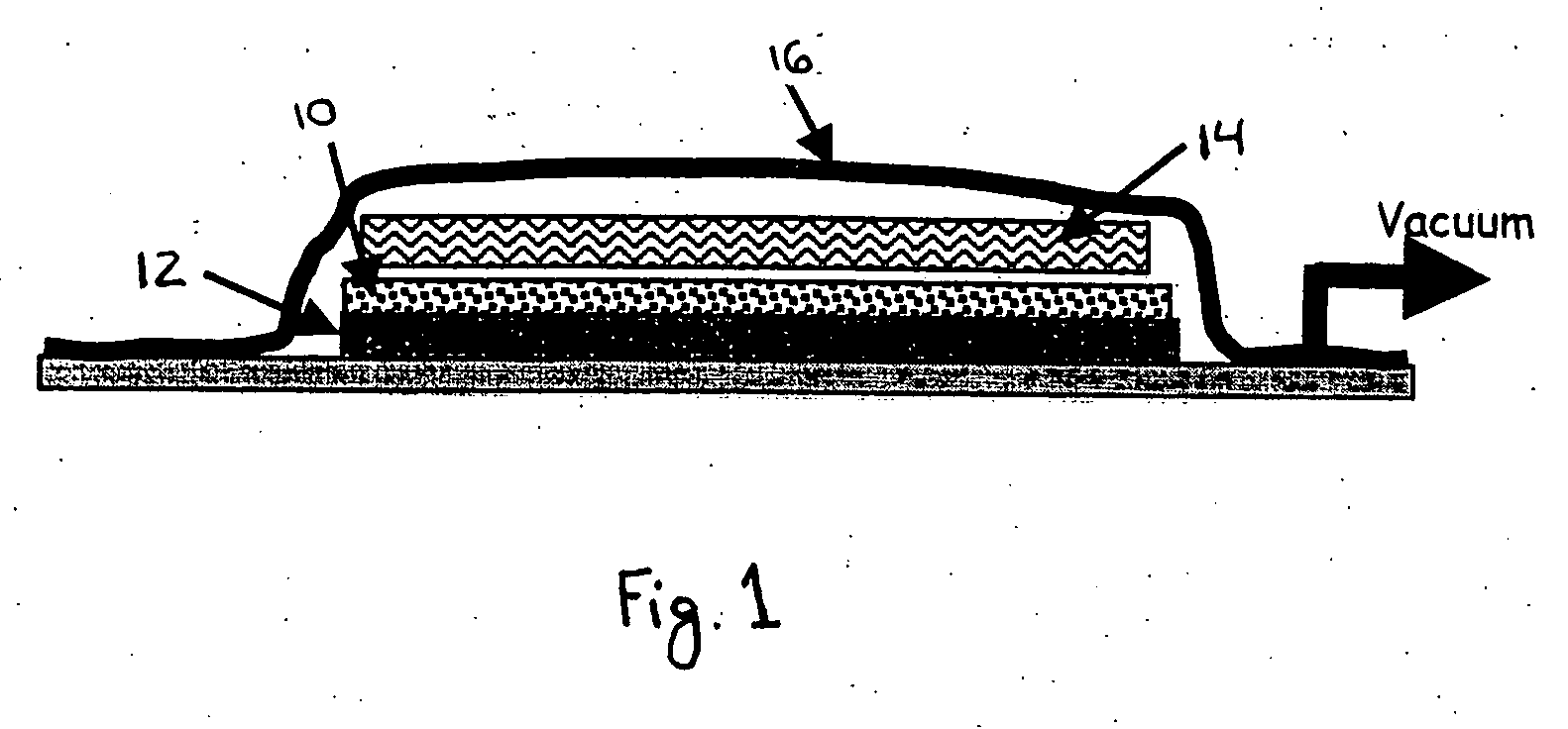Method of producing a ceramic matric composite
a ceramic matrix and composite technology, applied in the field of ceramic matrix composite production, can solve the problems of multiple infiltration/heat treatment, incomplete infiltration of tow bundles within woven ceramic cloths, fiber damage, etc., and achieve the effect of minimizing cloth damage, minimizing potential fiber damage, and maximizing tow bundle slurry infiltration
- Summary
- Abstract
- Description
- Claims
- Application Information
AI Technical Summary
Benefits of technology
Problems solved by technology
Method used
Image
Examples
example 2
[0018] Nextel 440 cloth (3M Corporation) reinforced silica (SiO2) matrix CMC (designated S-N440). In this example, ceramic preforms were created by laying together plies of Nextel 440 cloth, desizing the lay-up at about 1200° F., inserting the desized lay-up into a cotton bag and taping the ends of the bag with polyterafluroethylene (PTFE) tape, such as Teflon® brand tape from DuPont. The preforms were then overlaid with ⅛-inch thick open weave material soaked with ceramic slurry, such as set forth in Example 1. The slurry for the S-N440 system includes sub-micron silica, a silica-yielding polymer, solvents and deflocculents as defined by U.S. Pat. No. 5,306,554. This sandwich was placed in a silicone vacuum bag and a vacuum of greater than about 20 in. Hg drawn for a period of greater than about 15 minutes to infiltrate the slurry into the ceramic preform. The slurry-infiltrated preforms were dried overnight in ambient air and then laminated at or above nominal laminating condition...
PUM
| Property | Measurement | Unit |
|---|---|---|
| temperature | aaaaa | aaaaa |
| temperature | aaaaa | aaaaa |
| temperature | aaaaa | aaaaa |
Abstract
Description
Claims
Application Information
 Login to View More
Login to View More - R&D
- Intellectual Property
- Life Sciences
- Materials
- Tech Scout
- Unparalleled Data Quality
- Higher Quality Content
- 60% Fewer Hallucinations
Browse by: Latest US Patents, China's latest patents, Technical Efficacy Thesaurus, Application Domain, Technology Topic, Popular Technical Reports.
© 2025 PatSnap. All rights reserved.Legal|Privacy policy|Modern Slavery Act Transparency Statement|Sitemap|About US| Contact US: help@patsnap.com


